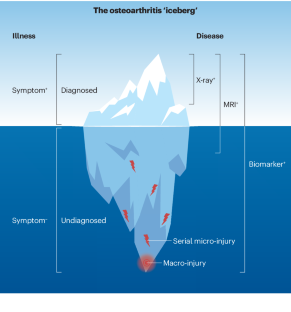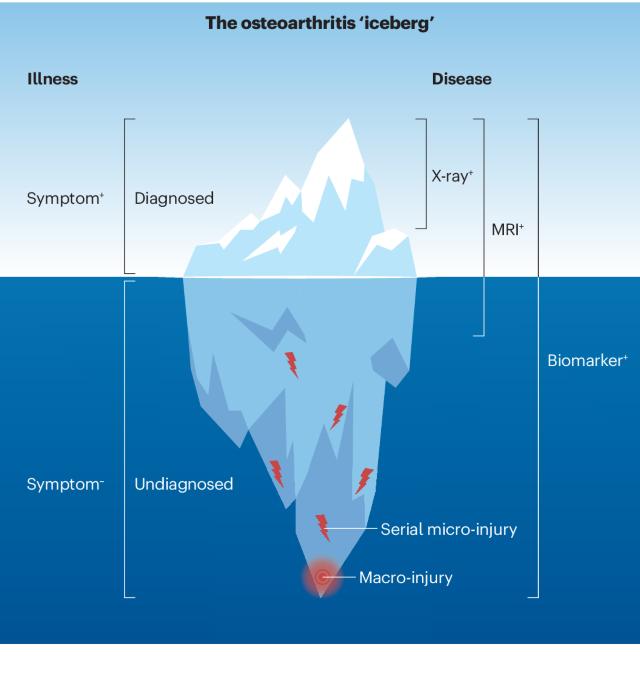预防创伤后骨关节炎的分子生物标记方法
IF 29.4
1区 医学
Q1 RHEUMATOLOGY
引用次数: 0
摘要
在膝关节受伤(如前交叉韧带断裂或急性半月板撕裂)后的 10 年内,多达 50% 的人会患上创伤后骨关节炎(PTOA)。据估计,下肢创伤性骨关节炎(PTOA)的发病率≥所有无症状骨关节炎(OA)的 12%,在美国约为 560 万例。有了对诱发事件的了解,就有可能利用敏感的成像和可溶性生物标记物 "当场抓住 PTOA",从而通过早期干预预防 OA 后遗症。关节损伤文献中现有的生物标志物数据可帮助人们深入了解 PTOA 的发病机制和早期风险轨迹,并有助于阐明预防或减缓 PTOA 发病的研究议程。非创伤性 OA 和 PTOA 在临床、放射学和遗传学方面有许多相似之处,因此,了解 PTOA 的早期风险轨迹可能有助于早期非创伤性 OA 的识别和分类,而早期非创伤性 OA 是 OA 的最常见形式。本文章由计算机程序翻译,如有差异,请以英文原文为准。


Molecular biomarker approaches to prevention of post-traumatic osteoarthritis
Up to 50% of individuals develop post-traumatic osteoarthritis (PTOA) within 10 years following knee-joint injuries such as anterior cruciate ligament rupture or acute meniscal tear. Lower-extremity PTOA prevalence is estimated to account for ≥12% of all symptomatic osteoarthritis (OA), or approximately 5.6 million cases in the USA. With knowledge of the inciting event, it might be possible to ‘catch PTOA in the act’ with sensitive imaging and soluble biomarkers and thereby prevent OA sequelae by early intervention. Existing biomarker data in the joint-injury literature can provide insights into the pathogenesis and early risk trajectory related to PTOA and can help to elucidate a research agenda for preventing or slowing the onset of PTOA. Non-traumatic OA and PTOA have many clinical, radiological and genetic similarities, and efforts to understand early risk trajectories in PTOA might therefore contribute to the identification and classification of early non-traumatic OA, which is the most prevalent form of OA. Early identification of osteoarthritis (OA) prior to the development of symptoms is challenging. Post-traumatic OA provides a model for the development of OA following a defined event. In this Review, the authors describe the existing knowledge relating to the biomarkers of post-traumatic OA, which might also be applicable to the identification of early non-traumatic OA.
求助全文
通过发布文献求助,成功后即可免费获取论文全文。
去求助
来源期刊

Nature Reviews Rheumatology
医学-风湿病学
CiteScore
29.90
自引率
0.90%
发文量
137
审稿时长
6-12 weeks
期刊介绍:
Nature Reviews Rheumatology is part of the Nature Reviews portfolio of journals. The journal scope covers the entire spectrum of rheumatology research. We ensure that our articles are accessible to the widest possible audience.
 求助内容:
求助内容: 应助结果提醒方式:
应助结果提醒方式:


